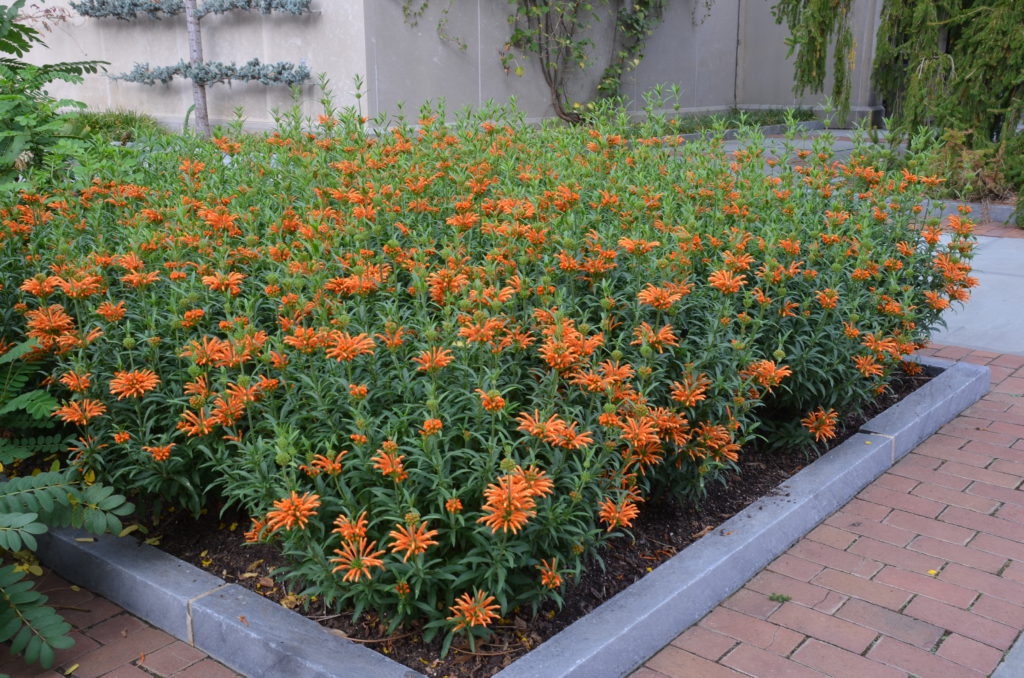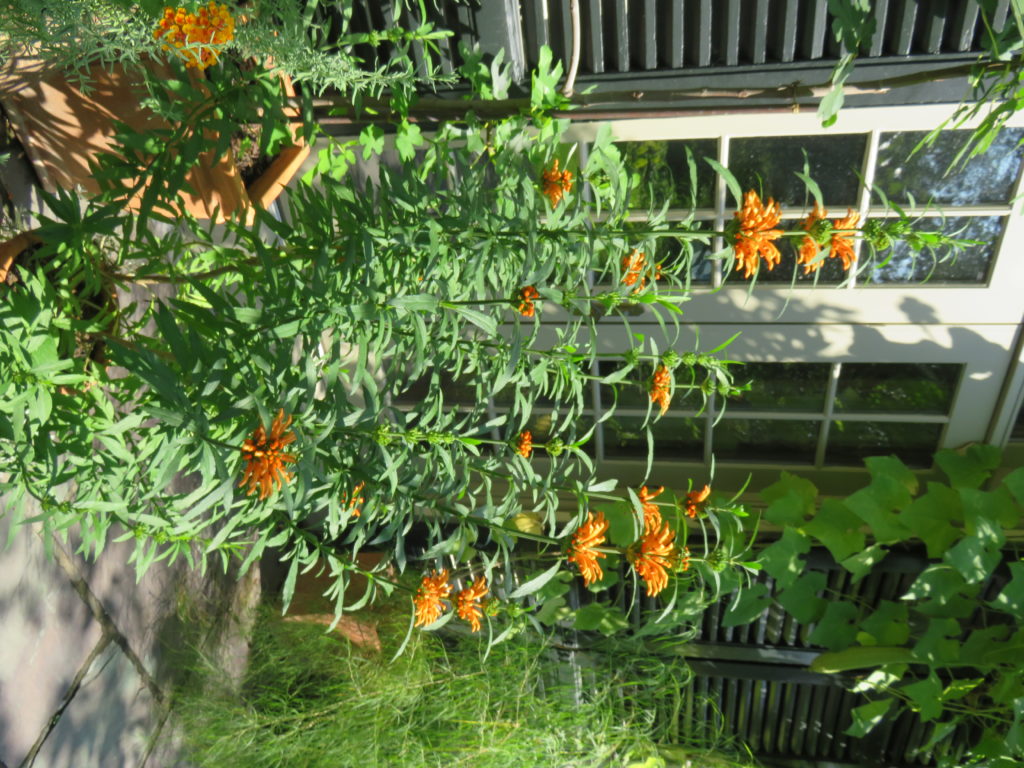Lion’s tail (Leonotis leonurus) is a tropical plant native to south Africa (USDA hardiness zones 8-11). I have seen used as a late summer – fall blooming annual in public gardens. Lion’s tail’s bright burnt orange flowers are standouts and receive great notice. The common name “Lion’s Ear” comes from the flowers resembling the color and shape of a lion’s ear.

Lion’s Tail is a semi-evergreen upright shrub in the mint family with a woody base and herbaceous stems. It boasts very showy rings of bright orange hairy two-lipped tubular flowers. Utilize as a cut flower in floral arrangements. Indigenous to South Africa, this plant is tolerant of extreme heat, drought, and dry soils. Where hardy, plants may freeze to the ground in winter and often resprout from hardened wood in the spring. Mulching the crown in winter aids to perennialize the plant. Prune annually after flowering to maintain a bushy dense shape.

Give this 4-6 feet tall and wide plant adequate room to grow in full day (in 6 hours minimum) sun and well-drained soil with average moisture. Hairy tubular orange flowers in whorls with two lips appear late spring through fall. The plant is also moderately drought tolerant once it has been established in spring and early summer planting.
Lion’s tail should be grown in a spacious garden location or container. The plant is disease and pest-free as well as deer resistant. Its tubular orange flowers attract hummingbirds, as well as bees and butterflies. In public gardens it should be coupled with some other fall bloomers like fall sunflowers (Helianthus), late summer-blooming salvias, cannas, and others.

 Posted in
Posted in 
